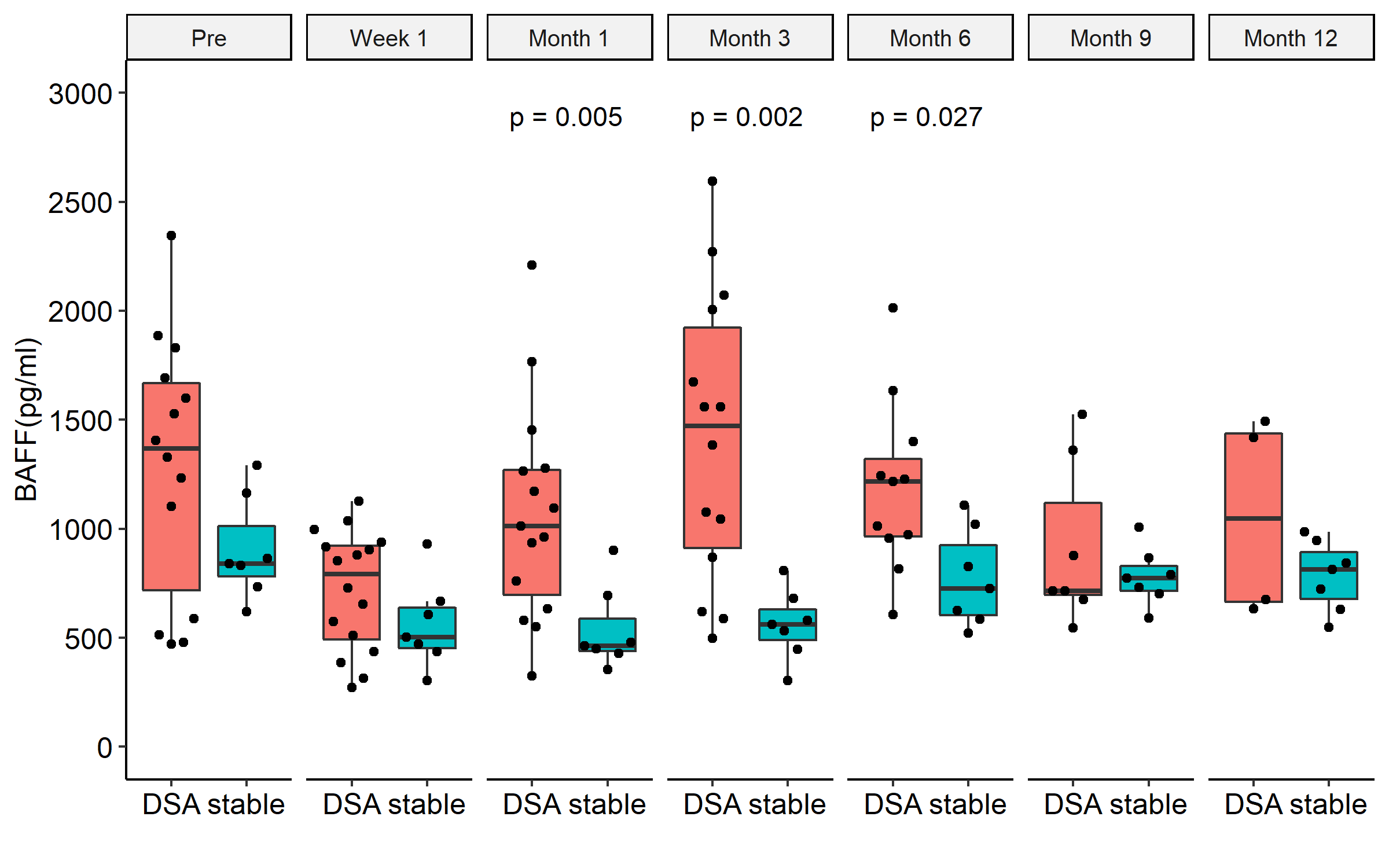Dynamic Changes of Serum Soluble B Cell Activating Factor in Kidney Transplant with De Novo Donor Specific Antibody
1Organ Transplant Center, The First Affiliated Hospital, Sun Yat-sen University, Guangzhou, China, 2The First Affiliated Hospital, Sun Yat-sen University, Guangzhou, China, 3Charité - Universitätsmedizin Berlin, Berlin, Germany
Meeting: 2022 American Transplant Congress
Abstract number: 404
Keywords: B cells, HLA antibodies, Kidney transplantation, Rejection
Topic: Clinical Science » Kidney » 44 - Kidney Acute Antibody Mediated Rejection
Session Information
Session Name: Kidney Immunosuppression: Desensitization & Acute Antibody Mediated Rejection
Session Type: Rapid Fire Oral Abstract
Date: Tuesday, June 7, 2022
Session Time: 3:30pm-5:00pm
 Presentation Time: 4:10pm-4:20pm
Presentation Time: 4:10pm-4:20pm
Location: Hynes Ballroom A
*Purpose: De novo donor specific antibody (dnDSA) plays a crucial role in the development of antibody mediated rejection (ABMR) and is correlated to the worse prognosis of kidney transplantation. For the survival, activation, and differentiation of B cells, the B-cell activating factor (BAFF) is important, making it a candidate biomarker for reflecting the risk of DSA. This study aimed to explore the dynamic changes of soluble BAFF (sBAFF) in kidney recipients with dnDSA and relationship between sBAFF and dnDSA.
*Methods: We continuously monitored the sBAFF levels of 23 recipients pre-transplant, at day 7, month1, month 3, month 6, month 9 and month 12 after transplantation. Longitudinal cohort consisted of 16 recipients with dnDSA and 7 DSA negative stable patients.
*Results: A total of 16 patients in the longitudinal cohort tested positive for DSA and the median time from transplantation to positive test was 327.5 (205.75, 419.75) days. The sBAFF levels decreased in all enrolled patients one week post-transplant but rebounded later (Fig 1). And earlier increased sBAFF levels were observed in DSA positive recipients. Further analysis found that early post-transplant sBAFF levels, especially sBAFF levels at three months post-transplant, could predict the occurrence of DSA, with an AUC of 0.908 (95%CI 0.781-1.000) and a cut-off of 839.28 pg/ml. the Cox regression proved that high-level sBAFF at month 1, 3 and 6 were risk factors for the production of the DSA (Table 1).
*Conclusions: Our study indicated that post-transplant sBAFF levels could predict the occurrence of the DSA and continuously monitoring sBAFF levels after transplantation may help early detection and intervention of DSA.
To cite this abstract in AMA style:
Wu S, Su X, Gao Y, Wei Y, Ye Q, Huang M, Chen Y, Wang J, Zhang Q, Fu Q, Li J, Huang H, Xu B, Zhang H, Liu L, Wang C. Dynamic Changes of Serum Soluble B Cell Activating Factor in Kidney Transplant with De Novo Donor Specific Antibody [abstract]. Am J Transplant. 2022; 22 (suppl 3). https://atcmeetingabstracts.com/abstract/dynamic-changes-of-serum-soluble-b-cell-activating-factor-in-kidney-transplant-with-de-novo-donor-specific-antibody/. Accessed December 29, 2025.« Back to 2022 American Transplant Congress

